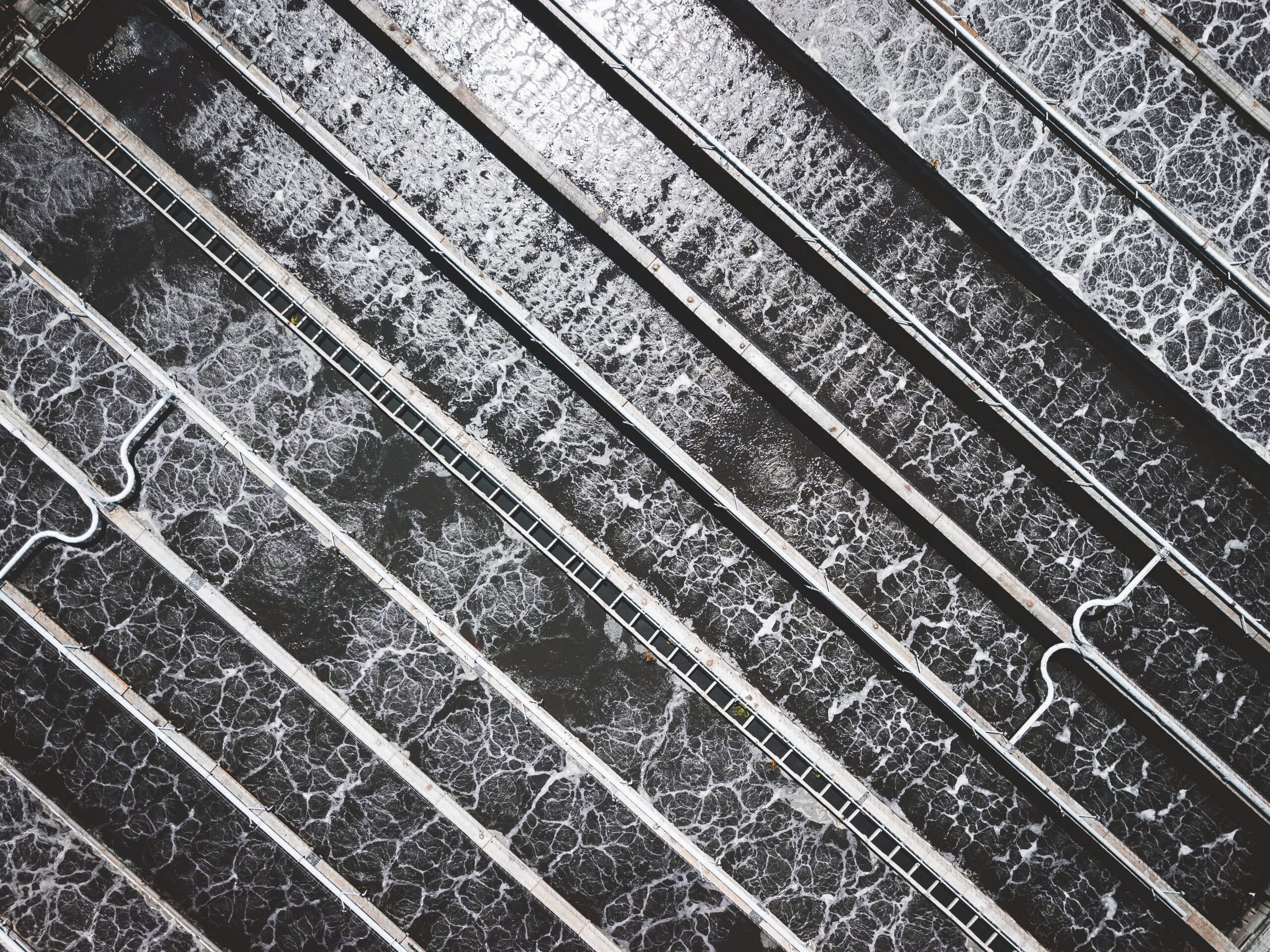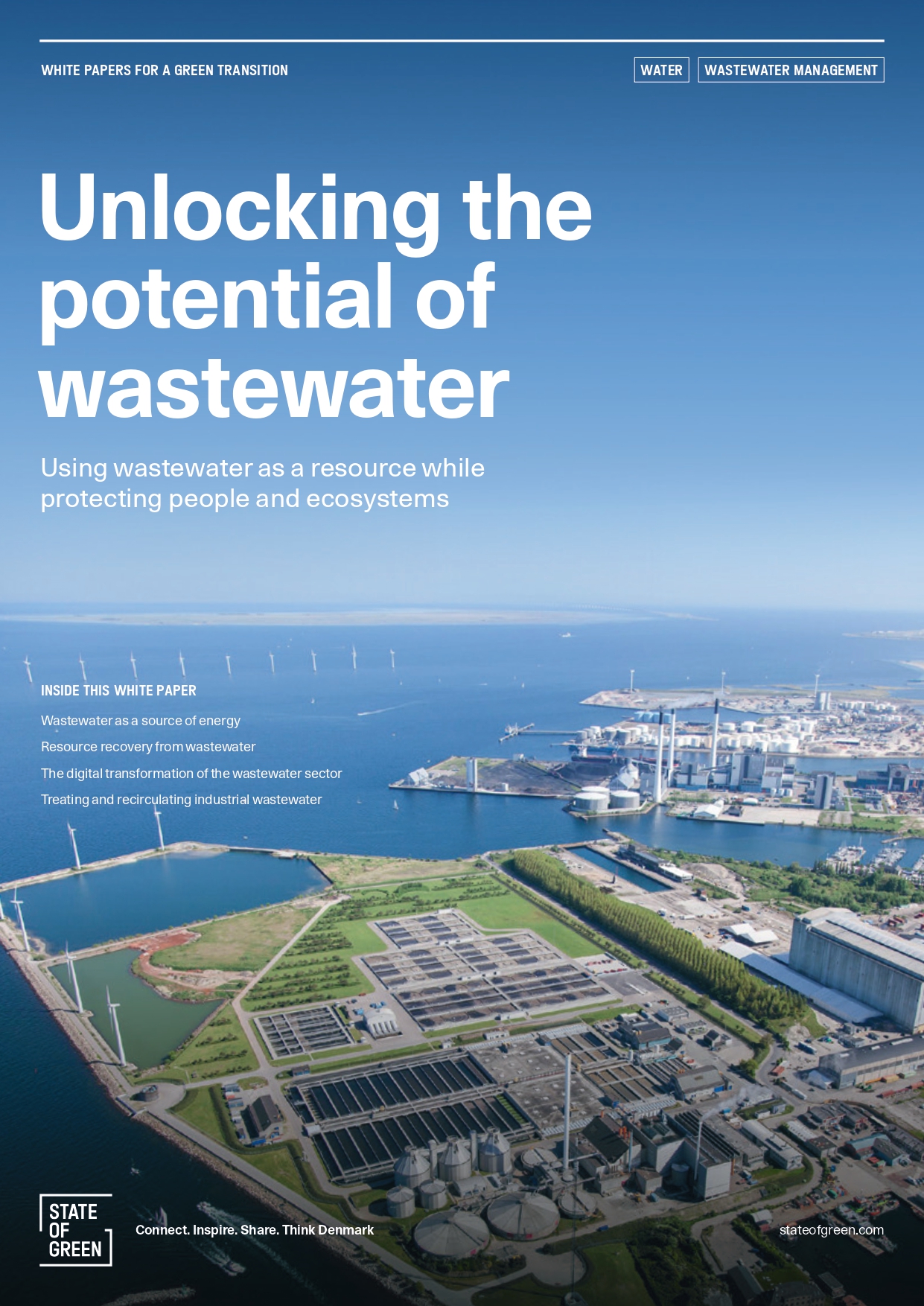Download our publication on unlocking the potential of wastewater
Discover our white paper on how to use wastewater as a resource while protecting people and ecosystems.
Explore the publicationPerspective
Wastewater treatment
Innovation
Power-to-x
+4



Discover our white paper on how to use wastewater as a resource while protecting people and ecosystems.
Explore the publicationInnovative solutions for handling contaminants include advanced technologies such as ozonation, activated carbon filtration, membrane filtration and the like, all of which are able to remove micropollutants from wastewater. In addition, there is research into the development of sorbents and advanced oxidation techniques for the removal of PFAS and medicinal residues. To mitigate greenhouse gas emissions from wastewater, the capture and utilisation of methane (CH4) as an energy source in biogas facilities is already underway, particularly in larger Danish treatment facilities. Efforts are intensifying to optimise this process and prevent CH4 leakage into the atmosphere. In addition, there are increased efforts to implement processes that can minimise nitrous oxide (N2O) emissions by optimising purification processes and possibly finding economically profitable methods for the decomposition of the N2O that will still be produced.
To achieve climate neutrality in future wastewater treatment plants, despite increasing demands for enhanced treatment — which usually requires more energy and chemicals such as activated carbon — introducing carbon capture technology may be essential. Therefore, carbon capture systems need to be developed for efficient operation on a relatively small scale, suitable for implementation at wastewater treatment facilities. A point of awareness is that CCUS generates wastewater which needs to be treated locally or externally before discharge into a receiving water body. This requires further innovation and investment.
In Denmark, Power-to-X (PtX), which is the conversion of renewable electricity into a variety of end products (X) via electrolysis, will represent a new large-scale energy source. However, the electrolysis process in PtX production requires substantial amounts of extremely pure water.
Experts across industries are currently investigating different water sources, such as contaminated groundwater, surface water, seawater and wastewater, to examine which have the potential to be treated to an ultra-pure level and utilised for electrolysis.
Using seawater poses a challenge due to the desalination process, which produces brine, also known as reject water, and necessitates effective management. Proper reject water treatment is crucial, as even a slight increase in water salinity can negatively impact marine ecosystems.
Sustainable solutions for handling rejected water from PtX production have yet to be developed. Moreover, attention should also be given to the environmental impact of reject water from PtX, which remains unknown and could pose a significant challenge.
Treated wastewater is another potential water source for PtX production in Denmark. Advanced treatment processes, such as advanced oxidation, membrane filtration and biological treatment, are required to remove contaminants like organic compounds and nutrients producing high-quality water suitable for electrolysis. Although the optimal water
source or combination for PtX production remains undetermined, it is clear that the water sector will play a crucial role in developing Denmark’s PtX infrastructure.
Fostering innovative solutions is necessary to solve the present and future challenges facing our society. Optimising and improving wastewater treatment technologies and processes depend on investments in research and development, and collaboration across the water sector. Investments are already being made, but the emphasis should be on securing a continuous evolvement as these investments are key to securing the water sector’s contribution to a more sustainable future.
solutions
Climate change adaptation
+4